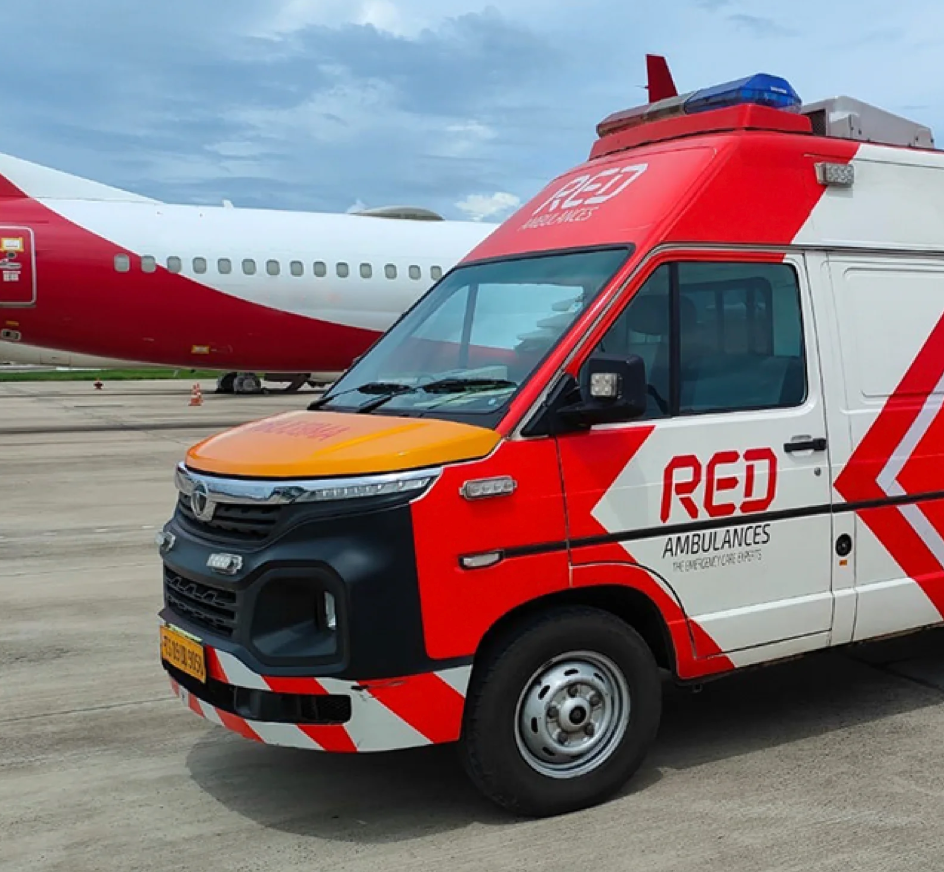In the face of a medical crisis, the difference between life and death often comes down to how quickly a patient can be moved to the right hospital. But when hospitals are far away and time is critical, ground transport isn’t always enough. This is where emergency evacuation by air becomes more than a solution. It becomes a lifeline.
Across India, RED Air Ambulance is reimagining emergency evacuations. It’s not just about fast flights. It’s about delivering structured, medically equipped, and well-coordinated evacuations when every step must be right, from pick-up to takeoff to touchdown. Through our skyborne support system, we are helping families, hospitals, and doctors ensure no time is lost when care matters most.
Let’s break down how this life-saving process unfolds and how we make it easy and rapid.
Inside an Emergency Evacuation: What Actually Happens?
An emergency evacuation isn’t a simple ride from one place to another. It is a multi-stage medical operation with many moving parts, and each of them must work in perfect sync. Here’s how the chain typically unfolds:
- A critical patient is identified who needs immediate advanced care not available locally.
- A request is raised, and the medical condition is assessed quickly by RED’s medical coordination team.
- Once cleared, a road ambulance is dispatched to pick up the patient from their current location, whether it’s a home or a hospital.
- The patient is brought to the nearest operational airport.
- At the airport, a fully equipped air ambulance is waiting, prepped with ICU-grade equipment, medical staff, and treatment continuity plans.
- Upon landing at the destination city, another road ambulance completes the final transfer to the receiving hospital.
This isn’t just transport. It is a medical evacuation designed to minimize delay and risk, with every step monitored and controlled by professionals.
Why is Skyborne Intervention Crucial in Emergency Evacuation?
India’s healthcare landscape is vast and often uneven. Many towns and smaller cities do not have the infrastructure for complex surgeries, trauma care, or specialist treatment. When a life is hanging in the balance, waiting for care isn’t an option.
That’s when skyborne intervention becomes critical. Here’s why:
- Speed across distances: What could take 10 hours by road might take just 90 minutes by air.
- Bypass ground delays: Traffic, roadblocks, or terrain issues don’t slow down a medical flight.
- Onboard care continuity: Critical patients don’t just wait till they reach a hospital. Care continues in the air, with RED’s trained doctors and paramedics working nonstop to stabilize and monitor.
- Access to specialty hospitals: From Tier 2 cities to top hospitals in Delhi, Mumbai, Hyderabad, or Chennai, we connect people directly to the right medical care without delay.
In real emergencies, the air isn’t a luxury. It is the safest, fastest, and most efficient medical path.
How RED Air Ambulance Excels in Emergency Evacuation?
What sets our Air Ambulance apart is not just that it flies patients. It is how they coordinate, care, and deliver outcomes that makes the difference.
1. End-to-End Coordination
From the moment the first call is made, we handle every logistical step. Whether it’s organizing airport clearance, preparing medical equipment, or syncing with hospital teams, RED’s backend coordination ensures there are no delays.
2. Fully Equipped Airborne ICUs
Every RED Air Ambulance flight is a high-care zone in itself. These aircraft are equipped with:
- Advanced ventilators and cardiac monitors
- Infusion pumps and defibrillators
- Stretchers are designed for patient stability during altitude changes
It’s a flying intensive care unit, handled by professionals who understand high-pressure healthcare.
3. Trained Medical Teams Onboard
A flight is only as safe as the people managing it. That’s why we ensure a dedicated crew of doctors, nurses, and paramedics are onboard each mission. They are trained to handle emergencies mid-air and adapt treatment protocols as the patient’s condition evolves.
4. Ground Support That Complements the Flight
Air evacuation doesn’t begin or end at the airport. We provide road ambulances on both sides, bridging the patient from their home or hospital to the airport, and then from the landing site to the destination hospital.
This seamless air-to-ground care chain ensures that the patient never loses medical supervision, not even for a second.
Making Medical Evacuation Accessible Across India
Our mission is clear. To make medical evacuation in India more accessible, organized, and reliable.
They serve patients from metros, towns, and even rural areas via coordinated ground pickups. Whether it’s a newborn requiring neonatal ICU (NICU) or a senior citizen on life support, we make sure every case is handled with the same precision, compassion, and readiness.
With increasing awareness, families, hospitals, and even insurance providers are recognizing how vital emergency air ambulance services are. Not as an afterthought, but as part of India’s evolving healthcare emergency response.
To understand more about how they operate or to initiate a request, you can visit Red Air Ambulance. Their team is on-call, round-the-clock, for critical needs.
The Future of Emergency Evacuation is in the Skies
In today’s fast-moving healthcare ecosystem, delays can cost lives. Evacuating a critical patient by road isn’t always enough, especially across states or cities. That’s why air ambulance response is no longer a premium option. It is a medical necessity.
With a robust structure, skilled team, and streamlined operations, RED Air Ambulance is bringing hope to thousands of families during the most challenging moments of their lives. And as technology and infrastructure improve, we are poised to help even more lives, quicker, safer, and smarter.
Frequently Asked Questions (FAQs)
1. What is the first step in booking an air ambulance with RED?
Call their emergency coordination center. RED’s team assesses the patient’s condition and immediately begins the planning process, including air and ground support.
2. Who travels with the patient on board?
A trained medical team, usually including a critical care doctor and a paramedic or nurse, accompanies the patient throughout the journey.
3. Can a patient be flown from a small city?
Yes. RED arranges ground transport from the patient’s location to the nearest airport, ensuring the evacuation begins swiftly.
4. What kind of aircraft does RED use?
RED uses fixed-wing aircraft customized for medical evacuation, fully fitted with ICU-level care equipment.
5. How quickly can an air ambulance be arranged?
Depending on location and clearances, RED can often arrange a mission within a few hours. Their team is active 24/7 for emergencies.


 18001207004
18001207004
 June 19, 2025
June 19, 2025 Red Health
Red Health